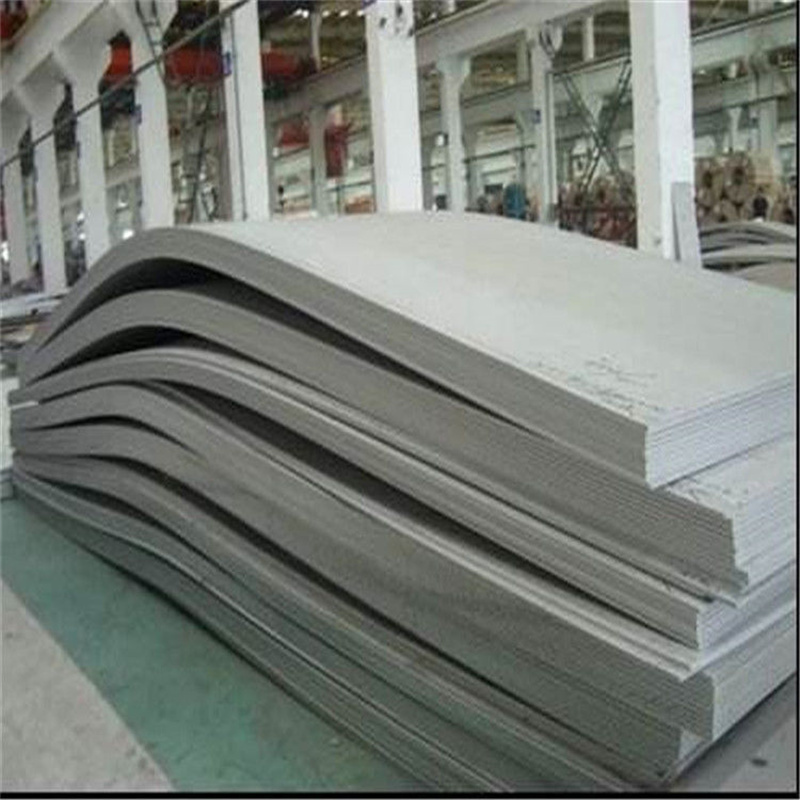Stainless steel plate is generally a general term for stainless steel plate and acid-resistant steel plate. Coming out at the beginning of this century, the development of stainless steel plate has laid an important material and technological foundation for the development of modern industry and scientific and technological progress. There are many kinds of stainless steel plates with different properties, and it has gradually formed several categories in the development process. According to the structure, it is divided into four categories: austenitic stainless steel plate, martensitic stainless steel plate (including precipitation hardening stainless steel plate), ferritic stainless steel plate, and austenitic ferritic duplex stainless steel plate. According to the main chemical composition of the steel plate or some characteristic elements in the steel plate to classify, divided into chromium stainless steel plate, chromium nickel stainless steel plate, chromium nickel molybdenum stainless steel plate and low carbon stainless steel plate, high molybdenum stainless steel plate, high purity stainless steel plate and so on. According to the performance characteristics and uses of the steel plate, it is divided into nitric acid resistant stainless steel plate, sulfuric acid resistant stainless steel plate, pitting stainless steel plate, stress corrosion resistant stainless steel plate, high strength stainless steel plate and so on. According to the functional characteristics of the steel plate, it is divided into low temperature stainless steel plate, no magnetic stainless steel plate, easy cutting stainless steel plate, super plastic stainless steel plate. The commonly used classification method is classified according to the structural characteristics of the steel plate and the chemical composition characteristics of the steel plate and the combination of the two methods. Generally divided into martensitic stainless steel plate, ferritic stainless steel plate, austenitic stainless steel plate, duplex stainless steel plate and precipitation hardening type stainless steel plate or divided into chromium stainless steel plate and nickel stainless steel plate two categories. Typical uses: pulp and paper equipment Heat exchanger, mechanical equipment, dyeing equipment, film washing equipment, pipelines, coastal area building external materials, etc.
The surface of the stainless steel plate is smooth, has high plasticity, toughness and mechanical strength, and is resistant to acid, alkaline gas, solution and other media corrosion. It is an alloy steel that is not easy to rust, but it is not absolutely rust free.
property
Corrosion resistance
Stainless steel plates have similar resistance to general corrosion as unstable nichrome 304. Prolonged heating in the temperature range of chromium carbide degree may affect alloys 321 and 347 in harsh corrosive media. It is mainly used in high temperature applications, where the material is required to have strong resistance to sensitization to prevent intergranular corrosion at lower temperatures.
High temperature oxidation resistance
Stainless steel plates have high temperature oxidation resistance, but the oxidation rate is affected by inherent factors such as the exposure environment and product form.
Physical property
In addition to the thermal conductivity of the metal, the total heat transfer coefficient depends on other factors. In most cases, the heat dissipation coefficient of the film layer, the rust and the surface condition of the metal. Stainless steel can keep the surface clean, so its heat transfer is better than other metals with higher thermal conductivity. Liaocheng Suntory Stainless Steel provides eight, stainless steel plate technical standards stainless steel plate corrosion resistance, bending processing performance and welding toughness, as well as welding parts of the stamping processing performance of excellent high-strength stainless steel plate and its manufacturing method. Specifically, it contains C: less than 0.02%, N: less than 0.02%, Cr: More than 11% less than 17%, the appropriate content of Si, Mn, P, S, Al, Ni, And meet 12≤Cr Mo 1.5Si≤17, 1≤Ni 30(C N) 0.5(Mn Cu)≤4, Cr 0.5(Ni Cu) 3.3Mo≥16.0, 0.006≤C N≤0.030 stainless steel plate heating to 850 ~ 1250℃, Then the heat treatment is carried out at a cooling rate of more than 1℃/s. This can become a high-strength stainless steel plate containing 12% volume fraction with martensitic structure, high strength, corrosion resistance and bending performance above 730MPa, and excellent toughness in the welding heat affected zone. Using Mo, B, etc., can significantly improve the stamping machining performance of the welding part.
Oxygen and gas flame can not cut stainless steel plate because stainless steel is not easy to be oxidized.
Post time: Aug-04-2023


